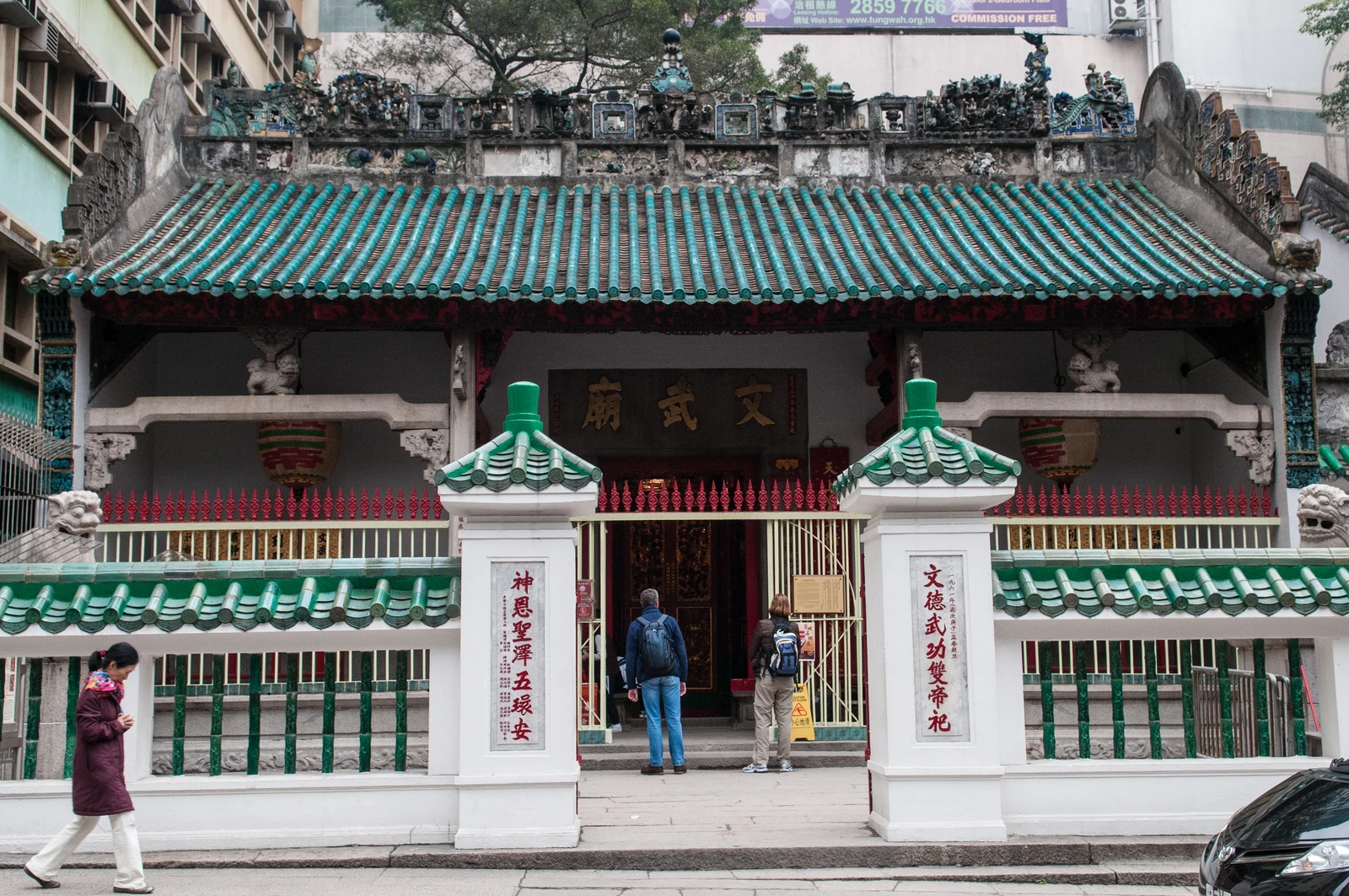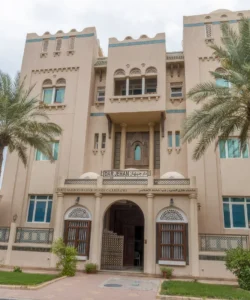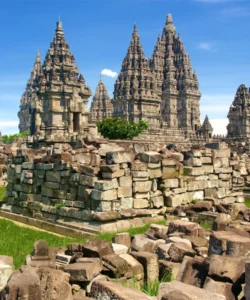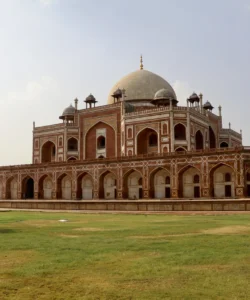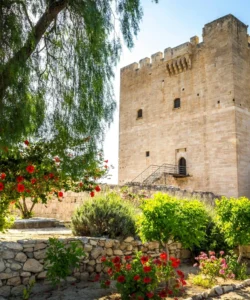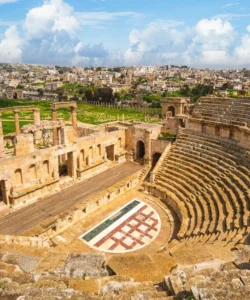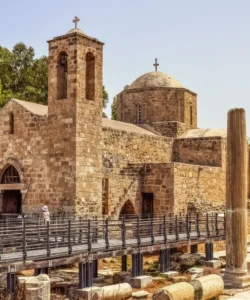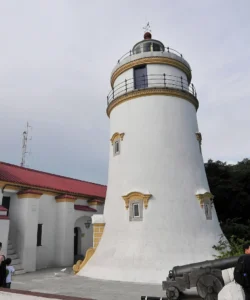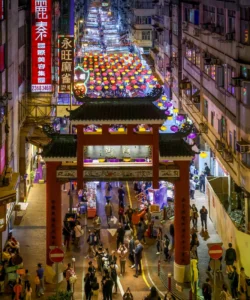Man Mo Temple is one of Hong Kong’s oldest and most revered temples, dedicated to the Gods of Literature (Man, or Man Cheong) and War (Mo, or Kwan Tai). Nestled amidst the towering skyscrapers and bustling streets of Sheung Wan, it stands as a serene and atmospheric testament to traditional Chinese folk religion and the enduring cultural heritage of Hong Kong.
![]()
Name: Man Mo Temple (文武廟, Man Mo Miu)
Address: 124-126 Hollywood Road, Sheung Wan, Hong Kong Island, Hong Kong.
How to get there:
Man Mo Temple’s central location in Sheung Wan makes it easily accessible:
- By MTR (Mass Transit Railway):
- Sheung Wan Station (Exit A2): From here, it’s about a 10-15 minute walk uphill along Wing Lok Street, then Ladder Street, or take a short taxi ride.
- Central Station: You can walk from Central (around 20-30 minutes, uphill in parts) or take one of the numerous buses or trams heading west.
- By Tram (Ding Ding Tram): Take a westbound tram along Des Voeux Road Central or Queen’s Road Central and alight near Ladder Street or Man Mo Temple. It’s a short uphill walk from the tram stop.
- By Mid-Levels Escalator: For a unique and scenic approach, take the Central-Mid-Levels Escalator up to Hollywood Road, and then walk west for a few minutes.
- By Bus/Minibus: Numerous bus and minibus routes serve Hollywood Road and surrounding areas.
- By Taxi: Taxis can drop you off directly in front of the temple on Hollywood Road.
Landscape and Architecture:
Man Mo Temple is a classic example of a traditional Chinese temple, characterized by its intricate design and harmonious integration into a dense urban environment:
- Traditional Chinese Temple Style: The complex features the distinctive architecture of Southern Chinese temples, with ornate ceramic roof ridges adorned with mythical figures, a series of courtyards, and richly decorated interiors.
- Multiple Halls: The temple is actually a complex of three separate blocks:
- Man Mo Temple Proper: The main hall, dedicated to the two principal deities, Man Cheong (God of Literature, identifiable by his brush) and Kwan Tai (God of War, identifiable by his red face and long beard).
- Lit Shing Kung: Located to its west, this hall is dedicated to all other heavenly deities.
- Kung Sor: A traditional assembly hall, used for community gatherings and arbitration of local disputes in the past.
- Intricate Woodwork and Stone Carvings: The temple is adorned with exquisite wooden carvings on its altars, doorways, and roof beams, as well as detailed stone carvings, particularly around the entrances.
- Coiled Incense Coils: One of its most striking visual features is the dozens, if not hundreds, of large incense coils hanging from the ceiling. These burn for weeks, filling the air with a fragrant smoke and creating a mystical, ethereal atmosphere, as well as a captivating visual.
- Gilded Statues and Altars: The various altars are filled with gilded statues of deities, offerings, and intricate religious paraphernalia.
- Red and Gold Dominance: The predominant colors used in the temple’s decoration are red and gold, symbolic of good fortune and prosperity in Chinese culture.
- Urban Integration: Despite its traditional design, the temple is tightly nestled between modern high-rise buildings and antique shops on bustling Hollywood Road, creating a fascinating contrast between old and new.
What makes it famous:
Man Mo Temple is famous for:
- Dedicated to Gods of Literature and War: Its unique dedication to Man Mo, representing the civil and martial aspects of imperial China, reflects the aspirations of scholars (for success in examinations) and warriors, and often invoked by ordinary citizens seeking fairness and prosperity.
- Preserved Historic Temple: It is one of the oldest and best-preserved temples in Hong Kong, offering a rare glimpse into the city’s pre-colonial and early colonial religious and community life. It was often a center for resolving disputes in the past.
- Iconic Incense Coils: The hundreds of large, slowly burning incense coils hanging from the ceiling are its most recognizable feature, creating a memorable visual and aromatic experience. They are frequently photographed.
- Atmospheric and Spiritual: The pervasive scent of incense, the soft glow of burning coils, and the quiet reverence of worshippers create a deeply atmospheric and spiritual environment that transports visitors away from the urban clamor.
- UNESCO World Heritage Status (Indirectly): While not individually a UNESCO site, it is part of the “Historic Buildings and Sites in Hong Kong” and recognized for its outstanding cultural significance.
- Filming Location: Its photogenic and atmospheric setting has made it a popular backdrop for many films and TV shows.
Differences from some other wonders:
Man Mo Temple, while a significant religious site, has unique characteristics that set it apart from other wonders:
- Specific Dual Deities: Its dedication to the Gods of Literature and War (Man Cheong and Kwan Tai) is a very specific aspect of Chinese folk religion that is the primary focus of this temple. While many temples are dedicated to various Buddhas or other specific deities, this dual focus on civil and martial achievement makes Man Mo distinctive.
- Urban Immersion: Unlike serene monasteries tucked away in mountains (like Po Lin Monastery or Tai Tan Buddha) or vast open-air markets (Temple Street), Man Mo Temple is deeply embedded within the dense, modern urban fabric of Hong Kong Island. Its contrast of ancient tranquility against the surrounding skyscrapers and busy streets is a major part of its appeal and unique charm.
- Iconic Incense Coils: While incense is common in Asian temples, the sheer volume and visual impact of the large, suspended, coiled incense sticks burning continuously for weeks is a signature feature of Man Mo Temple that is rarely seen on such a grand scale in other places.
- Historic Community Hub: Beyond its religious function, its past role as a community administrative and judicial center (where disputes were settled) adds a unique layer of historical depth that many other temples do not possess, highlighting its former secular importance.
- Smaller, Intimate Scale (Compared to Grand Monasteries): While ornate, it’s a relatively compact and intimate space compared to sprawling monastery complexes like Po Lin Monastery. This allows for a more focused and intense sensory experience.
In essence, Man Mo Temple is a mesmerizing and historically rich sanctuary, a rare and beautifully preserved slice of traditional Hong Kong that offers a captivating contrast to the city’s modernity and a deep dive into its enduring spiritual and cultural heart.
